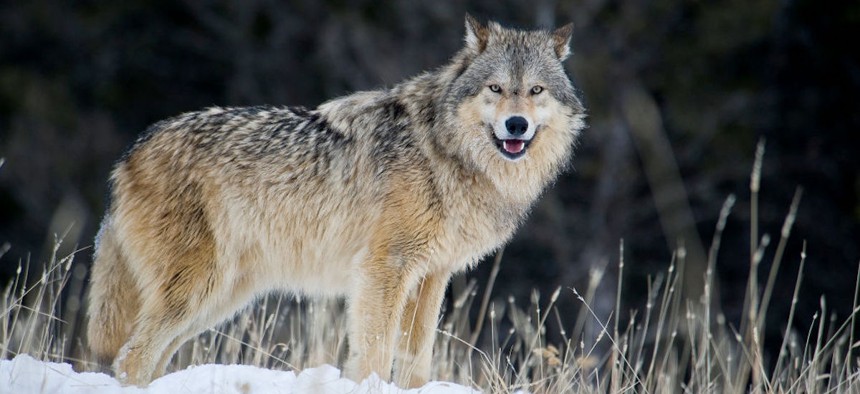States revisit wildlife management with an eye on resilience

Dennis Fast / VWPics/Universal Images Group via Getty Images
Some states are wondering if climate mitigation could have a furry, four-legged solution.
Fall can conjure up images of pumpkin spice lattes, flannels and duck boots, but for others, it’s hunting season. As hunters across the country ready their rifles and set their traps, states are reviewing their wildlife management plans to ensure a healthy, sustainable future for their animal populations.
Last month, for the first time in 20 years, Montana updated its gray wolf conservation and management plan to make way for better wolf population monitoring and offer recommendations for sustainable population control methods. The state is exploring how wildlife can be leveraged to create a resilient environment.
The new plan was requested by Gov. Greg Gianforte in a directive earlier this year, calling for the state’s Fish, Wildlife and Parks agency, or FWP, to reconsider management practices. It also comes two years after the state legislature passed a host of bills that loosen wolf hunting restrictions, such as lengthening the trapping season by 30 days.
The updated framework, however, calls for a cautious approach to population management. The state’s wolf population is currently around 1,100 to 1,200, according to Greg Lemon, administrator of FWP’s Communication and Education Division. But to keep wolf populations stable and in balance with the rest of the environment, “the management plan identifies 450 wolves as the necessary number of wolves to maintain 15 breeding pairs,” he said, adding that hunting regulations will be expanded or restricted as needed.
Hunters in Montana are allowed to kill up to 313 wolves under this year’s harvest quota, which is down from 450 in previous years. The reduction was necessary to ensure the population remains stable, as the 450 quota could lead to the population’s collapse by 2027.
Ensuring a balance between hunting and wolf population growth can help communities build climate resilience, one expert says. Wolves can impact the biodiversity of natural landscapes, which can affect a community’s ability to adapt and respond to climate change.
“Allowing some hunting and bolstering biodiversity are not necessarily mutually exclusive," said Logan Christian, wildlife and habitat coordinator at the National Caucus of Environmental Legislators. Wolves can even be “a tool for promoting biodiversity conservation.”
For instance, wolves can help keep the populations of grazing species like deer and elk in check, he said. Too many grazing animals in an area can wipe out plants, leaving the landscape vulnerable to flooding and erosion without root systems to keep soil in place. Wolves can also help enrich local biodiversity when they hunt. The carcasses left behind by wolves feed other species like bears, vultures, eagles, chickadees, flying squirrels and insects that also contribute to making the environment biodiverse, Christian said.
To help the state track wolf population levels and inform sustainable wildlife management, Montana is rethinking how to monitor the animals. Historically, wolf populations were calculated based on radio collar data and visual surveys, Lemon said, but those sources were hard to verify and likely largely underrepresented the true wolf population.
Under the updated plan, the state will use an integrated patch occupancy model that considers a variety of data sources to estimate wolf populations. For instance, the model will still use radio collar tracking data and hunter surveys but will also include field data from wildlife biologists, including information on wolf pack size, territory and habitat.
Wolves are receiving attention in other states, too. Wisconsin launched a new wolf management initiative in August, following an increase in the state’s wolf population in recent years, and Idaho released a six-year framework in May that calls for wolf populations to be reduced to be “in balance with other big game.” In Colorado, though, the Parks and Wildlife Commission approved a plan to reintroduce gray wolves to the state this year.
It’s not just predators that states are wrangling. In addition to Colorado’s wolf restoration initiative, the state is drafting a 10-year herd management plan to protect its dwindling elk and deer populations. And in Minnesota, the threat of a ‘super pig’ invasion inspired lawmakers to introduce a bill in March that would require the Department of Natural Resources to offer policy recommendations for feral pig management.
“Legislators are recognizing that … biodiversity is important in terms of keeping ecosystems resilient to climate change,” Christian said.






